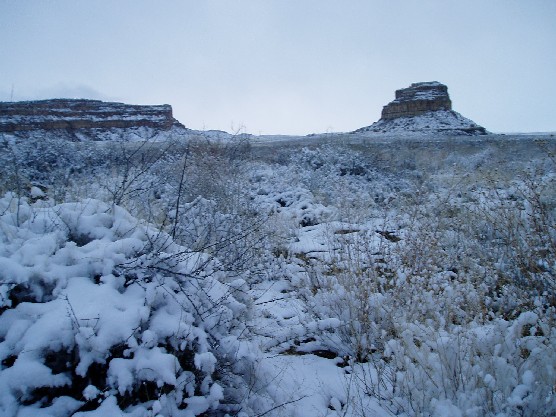A superficial arroyo dubbed Chaco National Monument meanders its way through the North West corner of New Mexico. Chaco National Historic Monument is pretty much unreachable, as it necessitates operating a vehicle over bouncy, washboarded primitive roadways to get to the campground. Upon arriving at Chaco Canyon to visit some Ancestral Puebloan attractions, don't forget the Anasazi were formative Indians, and their sacred sites deserve our deference and appreciation. Eons of continual erosion indicates this is an archaic terrain, to which the fossilized animals and insects and eroded geologic material attest. The Wash is viewed as high wilderness, at an elevation of 6,200 feet, with wind swept, cold, winter months and harsh summer months. The local weather was possibly dissimilar when men and women first put down roots in Chaco Canyon National Monument, about two-thousand nine hundred BC.
Approximately the year 850 AD, a stunning development occurred, and the Anasazi set about constructing substantial natural stone monuments. Chaco Culture National Park is the site at present where the partially collapsed buildings of the Great Houses can be seen. Creation and design ideas not previously known in the South-west USA were put to use to build these kind of properties. Great Houses contained a lot of Kivas, formal buried gathering places. The migration of the multitudes away of The Chaco region commenced somewhere around three hundred years after, the underlying factors for all of them with to leave, and never return remain a mystery. Perhaps, much less rainfall, management situations, or local climate prompted the fleeing to start. Chaco National Park in the years 950 AD and 1150 C.E. is the finest authentic mystery story of the AmericanSouthwest.
To discover more when it comes to this fabulous destination, you can get started by browsing this useful study related to this period of time.
